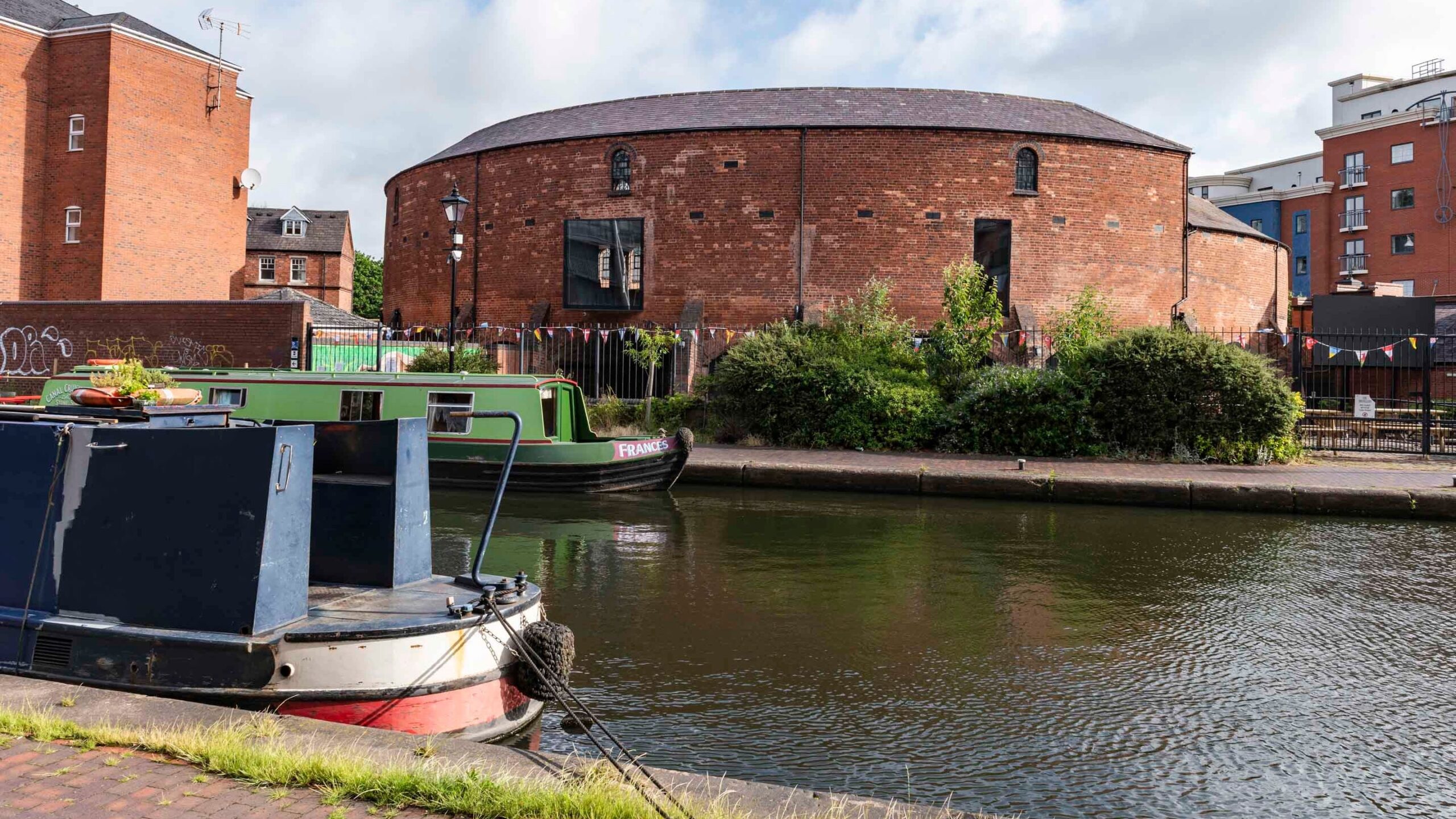The best free self-guided walking tours
Birmingham 1
The Mailbox – From Royal Mail to Retail
Free entry. See Mailbox website for more information
Standing before this vast brick structure, you’re facing what was once the world’s largest mechanical mail sorting office. Built in 1970, The Mailbox represents Birmingham’s later industrial heritage – not Victorian workshops but the massive-scale operations of the modern era. Its sheer size hints at its original purpose: sorting millions of pieces of mail daily for Britain’s industrial heartland.
Look up at the building’s distinctive horizontal lines. These weren’t just architectural fashion – they marked the internal levels where complex conveyor belt systems once carried mail between sorting floors. The regular grid of windows was precisely calculated to provide optimal light for mail sorting, while the red brick exterior was chosen to weather Birmingham’s industrial atmosphere. Notice how the building steps back at higher levels – a design that once accommodated different stages of the sorting process.
At ground level, find the preserved railway platforms where mail trains would arrive directly into the building. The tracks connected to the main rail network via a now-hidden tunnel – part of an intricate transport infrastructure that kept Britain’s industrial correspondence moving. These platforms weren’t just for trains; they were built at perfect height for both rail carriages and Royal Mail vans, allowing seamless transfer between different transport systems.
The building’s recent transformation maintains traces of its industrial heritage. The vast internal spaces, now home to shops and offices, were originally designed to house enormous mail-sorting machines. The BBC studios occupy what were once administrative offices, their soundproofing benefiting from walls built to dampen the noise of industrial postal equipment. Even the canal-side restaurants sit where mail boats once loaded and unloaded – a reminder that Birmingham’s waterways served industry well into the modern era.
From here, you can look back along our route and see how Birmingham’s industrial heritage has evolved: from Victorian civic pride to canal commerce, and finally to this late 20th-century industrial giant, now repurposed for the digital age.

